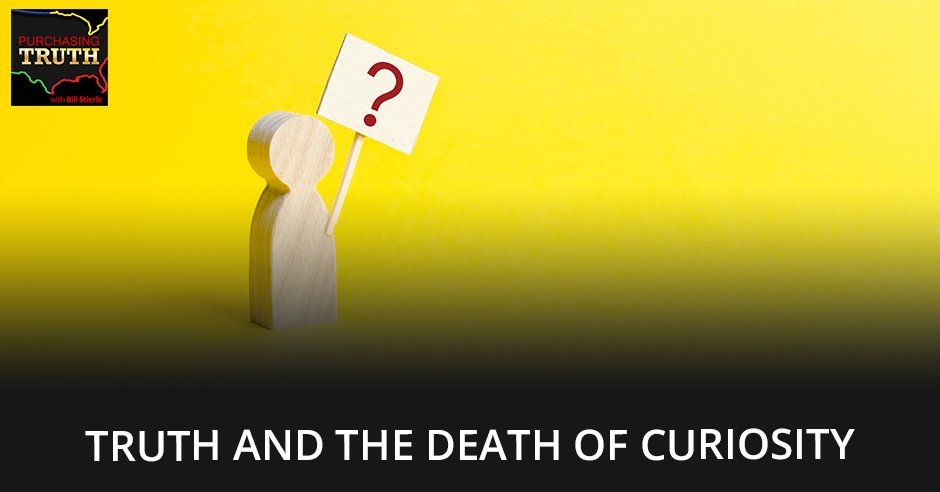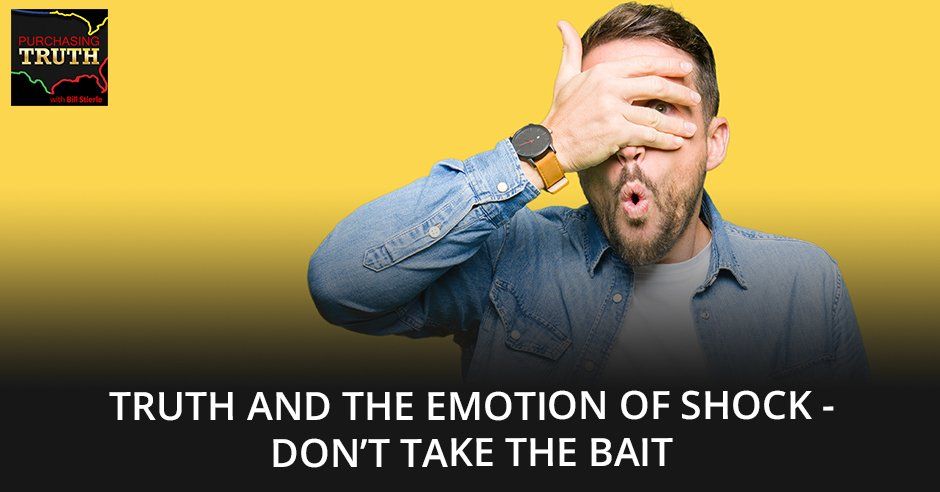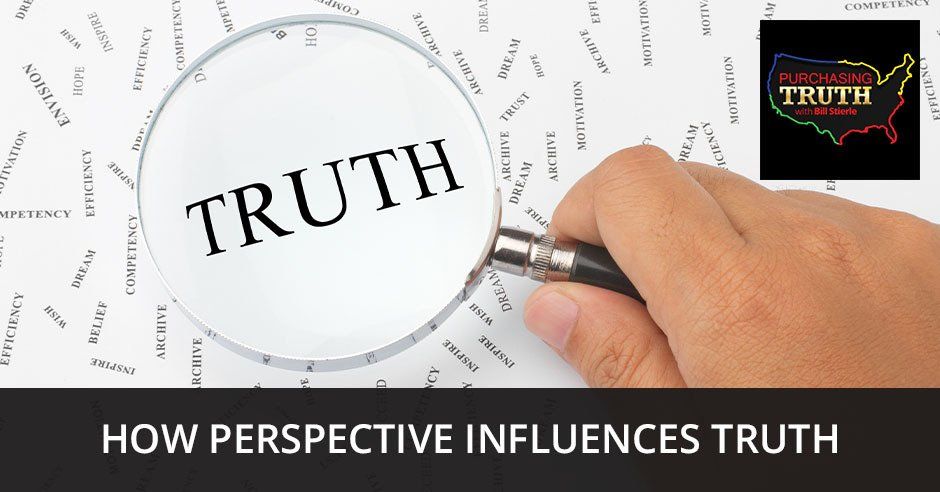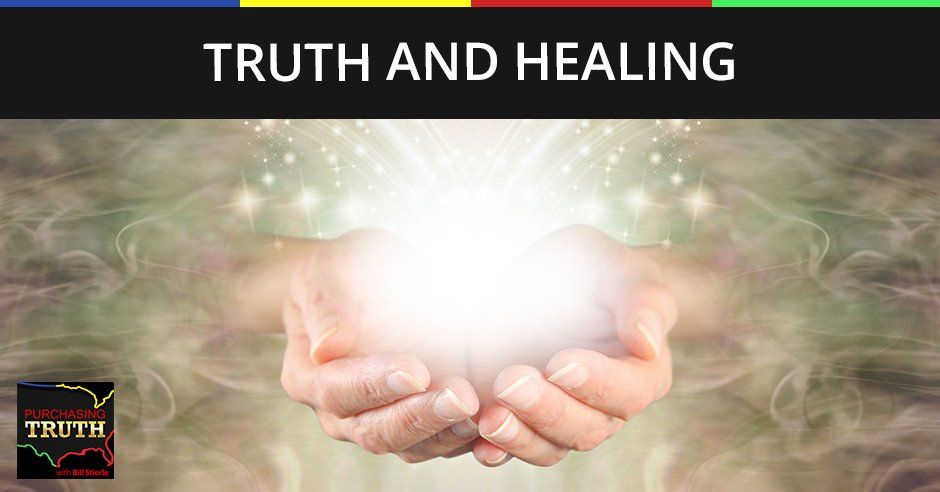Truth And Healing
Subscribe Today!
Human beings transfer trauma. When violence takes place, it moves down the line until someone decides that they’re not passing it down. This transfer of trauma is generational, and we’re only just beginning to see its effects. This explains why the death of George Floyd sparked so many protests and looting. On today’s show, Bill Stierle and Tom shine a light on this transfer of trauma and how we can stop it and start moving along the path of truth, healing, and restoration.
---
Watch the episode here
We were going to talk about truth and trauma. I think it’s a good place to go because all of these events we’ve been talking about in some of the episodes have generated a tremendous amount of trauma.
There has been a lot of trauma that’s taken place and it’s also the transfer of trauma. I think from some of our shows we were looking about how when violence takes place. It just moves down the line. Somebody is violent. The old slogan here is, “Who’s going to be the last one to pay for it is the dog.” The older person, the dad hit the mom. The mom did this to the kid. The kid did this. The little kid at the bottom kicks the dog because that’s all that’s left. The transfer of pain or the transfer of trauma is something that human beings do. They participate in it until one person in the chain says, “I’m not passing it down. I’m not going to make somebody else pay. My pain is enough. I’m not going to transfer my pain to another person.”
If I’m in pain, if somebody says or does something in my direction, my mind moves into a retaliation mindset. What is retaliation? Retaliation is a form of fairness and justice outside the law is what it is. We do have a society that spends too much time on punishment and rewards. We spend much time on bribing people to do things. We spend a lot of time trying to get people to let go of the thing they’re doing to do the thing we want them to do. When the person doesn’t do that, they don’t comply to the thing we want them to do, we then raise the escalation to a point of violence.
That’s a little bit about what we were talking about with the police officers. They were talking to somebody that was struggling with drugs and the current condition there. A big part of drugs is to wipe out the front part of the brain because of the amount of pain and things that experience. “I want to calm myself with a drug.” How am I going to do it? It’s going to knock that out. All of a sudden it turns violent. It’s, “I’m going to lose my freedom. This is going to cost me money. I don’t like cops to begin with,” whatever the thing is. You’ve then got three men fighting with each other, two cops trying to hold them down and tasing. Finally, regrettably the death of Rayshard Brooks.
Clearly, there’s a tremendous amount of trauma we have to acknowledge there with the loss of life. No question. There are children that don’t have a father and a wife that doesn’t have a husband. The trauma continued because it seems the community retaliated against the scene of all of this and burned down the Wendy’s restaurant.
The Wendy’s was burned because the trauma is a symbol of that store. It is a symbol of a violent traumatic act. Who wants to drive by that every day? Who wants to be reminded, “There’s the parking lot. There’s the video?” It’s the same thing with George Floyd. Who wants to be reminded of that imagery? Who? We were already on a heightened trauma of being locked in our houses to meet the need for consideration and health for others. Losing a couple of needs there to get the greater good to get support. I don’t want to see that Wendy’s. I don’t want to have that memory.
This type of economy that only offers service jobs that is not in the minimum wage, is not what I want in my society. It’s, “Great. You big guys get to come in here and sell us junk food.” Take the money because we’re already dealing with the three nickels we have in our pocket and that’s all we have available. I’m pissed at the whole thing. There’s no justification going on here. It’s you and I are working on a communication show to watch what people say to themselves to “rationalize” bad behavior or impulse on bad behavior. If I can’t get fairness any other way, nobody’s listening to me, and my votes don’t seem to count because of voter restriction. Let’s try burning a building. That might get somebody’s attention.
In some ways, Bill isn’t the drugs that you mentioned that Rayshard Brooks was intoxicated, alcohol at a minimum. We’re not sure if anything else. He took that drug to numb the pain that whatever pain or trauma he had. Isn’t burning the Wendy’s like another drug in some ways? People are feeling the need to retaliate. They have felt all this anger and they need relief from that anger. Somehow lashing out at the building, burning it down gave them some amount of relief the way a drug might.
The fight response takes a lot to turn on when you need protection, but it is difficult to shut off once the event is done.
CLICK TO TWEET
It does. It’s a temporary relief. The adrenaline goes up and the cortisol goes up the fight response. There’s almost like the bonfire is a celebration. It’s tragic for you and I to talk about this because neither of us is advocating for this. We need something to celebrate. We need some wins because we’re getting pummeled over here. We’re not getting a win. I don’t know. Why don’t we have a bonfire around this thing? I am completely over-exaggerating and completely simplifying this, but the motive is still fairness, justice, and being heard. I’ll be happy to have an adult conversation about how we can get the need for being heard, fairness, justice, and protection. It’s the need for safety met inside communities of color. Let’s do that. That’s a better conversation.
It’s a productive path to go down to try to get restoration. When you think about that trauma, it does explain why the death of George Floyd initially sparked many protests and why maybe it also sparked looting. It doesn’t make it right, the looting. The protests are perfectly reasonable and worthwhile. No question. Especially a peaceful protest. I applaud that. When you get into the burning of buildings and looting, these are crimes in and of themselves like taking an illegal drug or driving under the influence. I understand the relief it may bring, but it doesn’t make it right. It’s not in alignment.
It’s not the best way to get fairness and justice to burn down a store or looting a store. At the same time, Tom, the cumulative experiences that African Americans have faced. A friend of mine shared an article with me. There was this college art professor that was walking on his way to teach his course. He had a big hat on his head and he was walking along. The police pulled him up and started questioning him about, “You’re fitting the description of what a woman had called in as a suspect. Somebody broke into her house and you’re fitting that description.”
This guy is standing there. He’s walking to his college class a few blocks away. He starts feeling the pressure of multiple cops being around and he has a truth inside of him that he didn’t do it. “You’ve got the wrong person,” or “Was there a house I was walking by and somebody called because I walked by this house?” As if this has ever happened. It’s happened. We have that stuff on the news all the time. “Why are you calling again?” “Because you’re in the park at the same time I am. I’m scared.” He is going through this experience. After a while, they got some realization that he was not the person.
There was an African American woman across the street watching him. He made eye contact with her. She made eye contact with him. It was like, “Somebody is witnessing what I’m going through.” As he wrote about in his piece, he could feel the empathy and support of somebody witnessing what he was going through. After they let him go, she came up to him and said, “Are you okay?” Because none of that, “Are you okay?” thing is ever taking place. The person has to deal with their own feelings when they’re leaving that experience.
What the police don’t know, because they have to shake off things and go to the next case. That’s what they’ve got to do. They’re in the mindset of, “Hold it together. Find the law. Be efficient. Speak things. Find out the truth. Look for the fact. Maybe the person did it. Probably it’s the person that did do it.” They’re coming in with a little bit of stuff. “This is the description. We’ve got a clear description. Maybe not.” This professor has got to walk into a classroom with 30 art students. It’s got to go and beyond, “Are you kidding me?”
The transfer of trauma is also something that we’ve got to be good about it. With empathy training for police departments is saying to let the person emotionally off the hook. It might’ve sounded something like this, “I’m guessing you were probably scared when we first pulled you over or we first stopped you. You might be feeling nervous and anxious. You’re wondering if we were going to be safe and find out and be safe not only to you but to the community.” The police officer can deescalate the situation within five sentences that they are not trained to do.
“Mr. Jones, thanks for doing that. It doesn’t look like you’re the person, but I appreciate you stopping by.” It’s almost like, “What are you going to do? Hit him on the butt and set him on his way.” All that emotional baggage, go dump it on somebody else. “This is another memory of which that you’ve had.” They get a reaction with the police. I get exasperated talking about it. It starts working me up because it’s easy to empathize with when you know what your needs are. My need for fairness may be met. “I’m being questioned because of skin color. I’m being accused because of this.”
You’re not looking at these other things. Somehow, they’re not in the view. “How did all of a sudden the target get drawn on us?” That’s why truth gets lost in this and how trauma doesn’t allow us to do a good job with truth or restore the truth. One of the things that I heard that they were doing vigils in front of the burnt Wendy’s. Religious leaders from the area have come there and have set up prayer. Religious leaders have a time of prayer or a prayer vigil at that site. I would say that the site gets to be converted into a community center. I think Wendy’s donates the site right away. I don’t think they even screw with it.
I don’t think they want to try to rebuild and pretend this didn’t happen. That’s probably not the best move for them.
Not the strongest move for sure. For under $1 million or whatever it costs to rebuild or putting a new center there. This is a memory of where good things get to begin from this. You turn the ship so it turns in the direction you want to do it. You set the vision. You and I have talked about this a bunch. You want to set the vision about what you want to see after something that’s traumatic.
You want to see healing, restoration, and support for the community. All sorts of good things there. That would make perfect sense.
It’s a vision to set the path of better days. I want to set the vision. I’m not going to get there as if there’s a “there, there.”
You can take some steps in that direction.
This is something that’s going to make a difference, that’s going to make things happen.
There are lots of steps that need to be taken in America to bring restoration. I saw a new segment with eight different African American women who had lost a loved one due to police violence. These are some of the stories shared on television and some of the news programs. It’s sad when you hear about they died at the hands of a police officer. Only one of the police officers had been convicted of something and the others, either the cases are still pending or it’s no longer being investigated. To shine a light on the trauma that has been going on here for a long time. It shows you the real volume of the proportionality of the trauma and how badly needed restoration is. Peace is all these different needs need to be met. There’s a lot of work that has to be done to get there.
You’re navigating not just trying to get justice to take place, but making sure that the trauma is not passed on.
Does it become generational? Does that affect a person fundamentally that they raise their children to fear the cops, to not trust them, and to be on guard? No wonder when three police walk up to you as you’re walking across a school campus. If the police don’t come at them with the right amount of empathy and compassion, they’re immediately going to be defensive.
They’re going to get scared, worried, anxious, terrified and panicky. It tilts to anger and furious. “I don’t want to be helpless and panicky anymore. I’m going to do the fight response. I’m going to come over, do anger and furious.” None of that is conscious. It’s biologically instant. When you think that there’s going to be a lot lost if I get in the back of this police car and that’s what the guy thought before he started running or before he started swinging. He’s going like, “There’s going to be a lot lost if I get in this car. It’s better if I run from this. Fight with this.”
Unfortunately, his instinct was incorrect. Not that it was a certainty that he would die if he tried to resist arrest.
He had no idea that was coming.
It seems sad to me that he would think. He may not have been in his right mind because he was intoxicated. You have to understand that, but it’s sad to think that when the police say, “I’m placing you under arrest,” that he would think in any way that his life’s going to be better off if he tries to break away from that situation. They knew who he was. At that point, they knew where he lived. That’s what I’m saying. They have been 43 minutes questioning him. It’s sad that you can understand the trauma and what stimulated that flight response.
There was so much weight. I watched the news article and this is how truth gets hijacked a little bit. One person put a lot of weight on motive because after there was a witness in the area that heard the police officer say, “I got him.” What does that mean? It could be in his mind, “I feel calm. The need for safety and protection has been met,” or it could mean, “I feel angry. My need for respect wasn’t met.” It’s like, “I got him because our need for order wasn’t met.” In my mind, I am clearer by their behavior after is that I don’t think either of them thought he was going to die, in my mind. I would say because they were standing on him and making sure he was secure. They weren’t rendering aid. In their mind, they’d never shifted over to caring for the person that just got shot. They were still on the safety protection narrative.
I understand it took minutes before they started providing care and CPR. They probably took them some time to even comprehend what was going on. After 43 minutes of discussion and then a few minutes of struggle, it’s easy to understand how it would take them a little time to realize, “We’ve got to bring protection to this person. We’ve got to try to save him.”
The fight response. It’s a lot easier to turn it on when you need protection, but it is difficult to shut off once the event is done. The body is still trying to process all the excess chemicals in that environment. It’s sad and disheartening. It’s going to be interesting to see how we’re going to move down the path to restore truth, healing, to replace the trauma. The truth and healing regarding human beings do not just follow the letter of the law because you can run around that. Maybe our next episode might be about the truth about healing. What does it take?
That’s interesting. That would be an interesting discussion though.
If we are looking at systemic change as an anchor. We’re looking for better days to come and for change to move to the key position moving forward, then we need to have the truth about what systemic thinks. You never necessarily know what’s fully in the minds and hearts of any person at any time. You’ve got to do some things to set the intention for a human being to go, “This is what needs to be in your heart. This is what needs to be in your mind. You can then have this job.” There are seventeen things that a person needs to do to become a police officer. Number seventeen is a psychological test. Don’t you think that needs to be at the top of the list?
There's a lot of healing that needs to take place in our civil society and our culture.
CLICK TO TWEET
t’s a good idea to have a discussion around healing. On many different levels in this country, there’s a lot of healing that needs to take place in our civil society, in our culture, around policing, in our government, our politics with our leaders, and with Coronavirus.
There are all kinds of healing that need to take place. There’s a little need, Bill.
There is. Thanks for reading. More to come on this.
Love the show? Subscribe, rate, review, and share!







